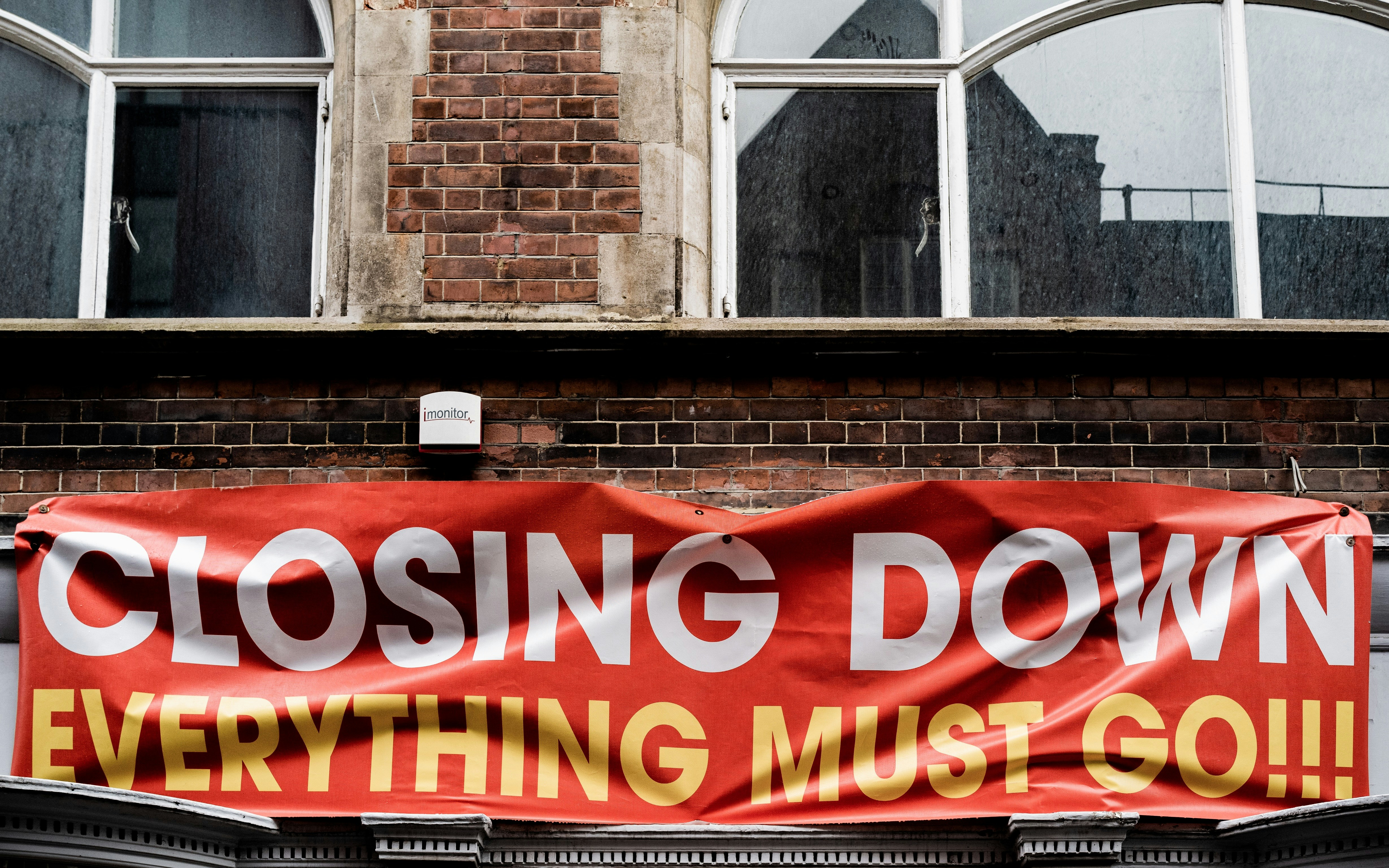Inflation And Weak Consumer Spending Cripple US Businesses: Who's Next After Party City?

Party City’s recent bankruptcy has sent shockwaves through the retail industry, highlighting the vulnerabilities of consumer-focused companies in today’s economic environment. Persistent inflation and weak consumer spending are two of the primary culprits behind this collapse. These factors have not only diminished profitability but also created immense financial strain on businesses. As Party City’s struggle becomes a cautionary tale, other companies across various industries may be facing similar risks.
The Impact of Persistent Inflation
Rising Costs for Businesses
Inflation has driven up the cost of raw materials, labor, and transportation. For consumer companies, these rising input costs have been difficult to manage, especially as price-sensitive customers resist passing these costs along. Companies with already thin profit margins are finding it nearly impossible to maintain profitability.
Reduced Profit Margins
The inability to transfer higher costs to consumers has eroded profit margins, particularly for small and mid-sized businesses. For example, retailers and manufacturers reliant on fixed-price contracts are grappling with unexpected increases in expenses.
Examples of Struggling Companies
Beyond Party City, other retail giants have reported declining earnings as a result of inflationary pressures. While some have managed to stay afloat, their margins remain under significant strain, leaving them vulnerable to further economic downturns.
Weak Consumer Spending: A Catalyst for Decline
Eroded Purchasing Power
Persistent inflation has significantly reduced the purchasing power of consumers. Rising costs for necessities such as food, housing, and energy leave less room for discretionary spending. As a result, businesses that depend on non-essential purchases are facing declining sales.
Shift in Consumer Priorities
Consumers are prioritizing essential goods over luxury or entertainment items. This shift in priorities has impacted industries such as retail, dining, and travel, which rely heavily on discretionary spending.
Retail and Entertainment Sectors Hit Hard
Retailers in particular have struggled to adapt. Declining foot traffic and reduced online sales are eroding revenue streams. Companies like Bed Bath & Beyond and entertainment-focused businesses such as AMC have reported significant challenges in maintaining customer engagement and profitability.
Why Consumer Companies Like Party City Are Vulnerable
Debt Overhang
Many consumer companies, including Party City, are heavily leveraged. Rising interest rates have increased borrowing costs, exacerbating financial stress. Servicing debt has become unsustainable for some businesses, pushing them closer to bankruptcy.
Seasonal Reliance
Party City’s dependence on seasonal sales, such as Halloween, makes its revenue stream volatile. Seasonal businesses face added risks when consumer spending weakens during critical periods.
Competition and Changing Trends
Traditional retailers face fierce competition from e-commerce giants, which often offer lower prices and greater convenience. Moreover, evolving consumer preferences have left some companies struggling to remain relevant.
The Broader Fallout Across Industries
Retail and Hospitality
The retail and hospitality sectors are particularly vulnerable to declining consumer spending. Businesses dependent on discretionary purchases, such as luxury goods or leisure services, face the highest risk.
Manufacturing and Logistics
Decreased demand for goods impacts supply chains, leading to reduced production volumes and lower profits for manufacturers and logistics providers.
Technology and Services
Even industries not directly tied to consumer spending are feeling the effects. Reduced corporate spending on technology and professional services reflects the broader economic slowdown.
Who Could Be Next?
Identifying Red Flags
Key indicators of vulnerability include high debt-to-equity ratios, declining revenue trends, and reliance on discretionary consumer spending. Companies exhibiting these characteristics are more likely to face financial difficulties.
Potential Companies and Industries to Watch
Retailers heavily reliant on physical stores.
Hospitality businesses with limited cash reserves.
Smaller consumer brands unable to compete with larger, more resilient competitors.
Retailers heavily reliant on physical stores.
Hospitality businesses with limited cash reserves.
Smaller consumer brands unable to compete with larger, more resilient competitors.
Strategies for Companies to Survive the Crisis
Cost Optimization
Companies must streamline operations and reduce unnecessary expenses to improve profit margins. This can include renegotiating supplier contracts and adopting lean management practices.
Debt Restructuring
Businesses with high levels of debt should explore restructuring options, such as negotiating lower interest rates or extending repayment timelines.
Diversification
Expanding product or service offerings can stabilize revenue streams and reduce reliance on seasonal demand. For example, Party City could have diversified into year-round party supplies or services.
Adapting to Consumer Trends
Investing in e-commerce and leveraging data analytics to understand shifting consumer preferences can help companies stay competitive. Businesses that embrace these changes are more likely to survive and thrive.
Conclusion
The bankruptcy of Party City underscores the challenges facing consumer-focused companies in today’s economy. Persistent inflation and weak consumer spending have created a perfect storm, pushing many businesses to the brink. While some companies will succumb to these pressures, others have an opportunity to adapt and emerge stronger. By adopting cost-effective strategies, diversifying their offerings, and leveraging technology, businesses can navigate this turbulent landscape. As the economic climate continues to evolve, resilience and innovation will determine which companies survive the storm.
Author: Ricardo Goulart
The Penny Drops: Understanding The Complex World Of Small Stock Machinations
Micro-cap stocks, often overlooked by mainstream investors, have recently garnered significant attention due to rising c... Read more
Current Economic Indicators And Consumer Behavior
Consumer spending is a crucial driver of economic growth, accounting for a significant portion of the US GDP. Recently, ... Read more
Skepticism Surrounds Trump's Dollar Devaluation Proposal
Investors and analysts remain skeptical of former President Trump's dollar devaluation plan, citing tax cuts and tariffs... Read more
Financial Markets In Flux After Biden's Exit From Presidential Race
Re-evaluation of ‘Trump trades’ leads to market volatility and strategic shifts.The unexpected withdrawal of Joe Bid... Read more
British Pound Poised For Continued Gains As Wall Street Banks Increase Bets
The British pound is poised for continued gains, with Wall Street banks increasing their bets on sterling's strength. Th... Read more
China's PBoC Cuts Short-Term Rates To Stimulate Economy
In a move to support economic growth, the People's Bank of China (PBoC) has cut its main short-term policy rate for the ... Read more

